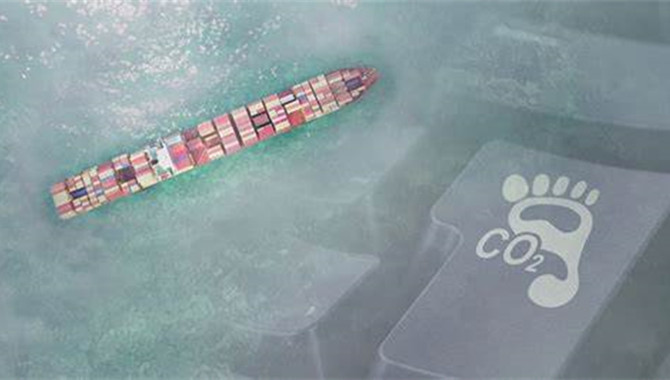Scope 1 emissions, or direct emissions, are GHG emissions from the sources that are owned or controlled by the reporting entity. For all industries, including shipping, this refers primarily to emissions from fuel consumption.
Scope 3 refers to all indirect GHG emissions from all sources, whether upstream or downstream of a value chain, and which are not owned or controlled by the reporting entity directly. This includes, but is not limited to:
·Emissions due to production of goods and services used by the activities
·Upstream emissions from feedstock or energy used that are not included in scope 1 (or scope 2), such as the emissions associated with fuel extraction, production, and transportation
·Emissions indirectly caused by transportation
·Emissions due to disposal and treatment of waste, including end-of-life treatment of products
·Emissions due to service or product use
Who should account and report emissions?
For shore-based industries, the corporate GHG standard distinguish between the responsibility for accounting and reporting scope 1 emissions based on whether the source is owned or controlled by the reporting entity. However, when applied to shipping this principle introduces some ambiguity in relation to the contractual business practices.
After conferring with the members of BIMCO's Marine Environments Committee, the following is suggested regarding reporting of GHG emissions for the various common charter arrangements used today:
For shipping, the guiding principle for GHG accounting and reporting should be that the entity paying for the actual amount of fuel used should account for emissions under scope 1.
Voyage charter
Using the guiding principle mentioned above for ships on voyage charter, the responsibility for accounting and reporting of scope 1 emissions rests with the shipowner. Under a voyage charter the shipowners provide and pay for the fuel. They estimate the cost of fuel for the voyage and build that amount into the freight payable per ton of cargo carried which the charterers pay to the owners. The shipowner pays for the actual amount of fuel used.
For ships on time charter, the charterers provide and pay for the fuel consumed during the charter period. When the ship is delivered at the beginning of the charter period, the charterers take over and pay the owners for the fuel already on board the ship. During the charter, the charterers provide and pay for the actual amount of fuel used. On redelivery, the owners take over and pay the charterers for the fuel remaining on board. Using the guiding principle, the responsibility for accounting and reporting for scope 1 emissions rests therefore with the time charterer.
Single trip time charter parties are a hybrid of voyage and time charter parties and often have arrangements for the shipowners to provide and pay for the fuel, but to invoice the charterers for the actual amount of fuel used. In these cases, the responsibility for accounting and reporting of emissions under scope 1 rests with the time charterer.
For ships on bareboat charter, the charterer has taken over full control of the ship. Thus, the responsibility for accounting and reporting of emissions under scope 1 rests with the bareboat charterer as if they were the actual owners.
In many cases a ship operates under what is known as a “charter party chain”, meaning that the charterer who has chartered the ship from the shipowner subsequently have sub-chartered the ship to another charterer who is controlling the ship. It must be ensured that a complete and accurate picture of emissions based on each individual activity (voyage) is obtained.
It is essential to ensure that only one entity account and report for the emissions under scope 1. The idea is that the accumulated scope 1 emissions reported from ships should reflect the total amount of GHG emissions from ships. Any double-reporting of emissions under scope 1 would not provide realistic accounts of emissions from shipping.
However, the standards for accounting and reporting allows several entities to report the same emissions and avoid double counting through the provision of the scope 3 category. Whilst scope 3 reporting is not compulsory it is being increasingly adopted by many industries.
The two following examples illustrates the accounting and reporting for ships operating under charterparty chains:
Even though scope 3 emissions are not mandatory to report it is important to include them. Compulsory accounting and reporting of scope 1 emissions can only provide information on the fuel used in operations. Assessing the entire value chain by accounting and reporting of scope 3 emissions is beneficial because it is likely to lead to collaborative ways to improve efficiency and reduce environmental impacts.
It also allows the modelling of future scenarios which could for example include transition pathways for alternative fuels. In turn, initiatives by large retailers to incorporate their scope 3 emissions will help the shipping industry move towards a sustainable future.
Source: BIMCO
The opinions expressed herein are the author's and not necessarily those of The Xinde Marine News.
Please Contact Us at:
media@xindemarine.com




 Ningbo Containerized Freight Index Weekly Commentar
Ningbo Containerized Freight Index Weekly Commentar  Ningbo Containerized Freight Index Weekly Commentar
Ningbo Containerized Freight Index Weekly Commentar  Ningbo Containerized Freight Index Weekly Commentar
Ningbo Containerized Freight Index Weekly Commentar  BIMCO Shipping Number of the Week: Bulker newbuildi
BIMCO Shipping Number of the Week: Bulker newbuildi  Ningbo Containerized Freight Index Weekly Commentar
Ningbo Containerized Freight Index Weekly Commentar  Ningbo Containerized Freight Index Weekly Commentar
Ningbo Containerized Freight Index Weekly Commentar